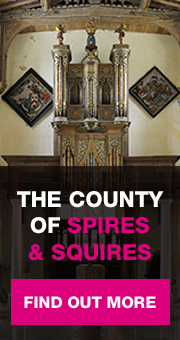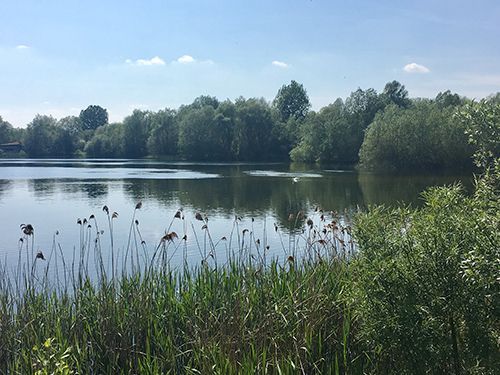5th July 2018
This month I’m stepping back over 5000 years into the past. I’m exploring the remains of the settlers of the Nene valley who lived around the area we now know as Stanwick Lakes.
Just a short stroll from the busy retail experience at Rushden Lakes lies the tranquil country park of Stanwick Lakes. This site has seen human activity for millennia. Archaeologists have found clues to the past stretching back into the Neolithic (new Stone Age) right through to the later mediaeval period. These remains rested relatively undisturbed until the development plans of the 1980s meant that archaeological investigation was necessary before they were lost forever.
Now the landscape has been transformed into a beautiful watery world. The park is accessible with over seven miles of pathways, and a trail revealing key sites discovered by the archaeologists. There’s a great leaflet available from the Visitor Centre, and as you explore there are six helpful marker stones positioned to indicate where you are in time.
The journey into the past starts nearly 6000 years ago, with traces of a long barrow burial mound. Finds included flint arrowheads and antler tools used by the nomadic first farmers of the Nene valley. A Bronze Age round barrow is clearly to be seen. Inside the skulls of enormous wild oxen, or aurochs were found here along with domestic cattle bones piled over a human burial.
The Iron Age left traces of around fifty timber roundhouses, along with domestic debris including a quern stone used for grinding grain into flour, pottery and even some coins. The roundhouses were grouped together, perhaps families living close by each other.
The Roman site is particularly special. It is thought that the previous Iron Age roundhouses were replaced by more substantial timber and then stone homes. Large local towns such as Irchester and Peterborough had an increasingly urban population needing large amounts of foodstuffs. This provided a good market for the Stanwick farmers. A prosperous Roman estate developed with a large luxurious villa featuring all the mod cons, such as a veranda, mosaic floors and underfloor heating. This villa now lies underwater between two islands, but it has been recorded and the finds preserved.
The last stop on the trail takes us forward to Saxon and Norman times. The Roman system had collapsed, and settlement reverted to small farmsteads. A Saxon lord built a timber hall, and a water mill to produce flour. Finds suggest a mix of influences, as Scandinavian style horse harnesses and gaming pieces were found locally. A Norman lord rebuilt the settlement in stone, but clearly flooding became an issue and eventually the hamlet was abandoned. However the saturated ground helped the preservation of many finds which can be seen in the visitor centre.
What makes this place so exciting is its accessibility, the site welcomes all ages and interests. There is loads happening, volunteering opportunities, hands-on activities and reenactment, and the rebuilding of a Round house and ancestral barn. You can take part or just go and look.
And of course, it is breathtakingly beautiful.
For more information please visit www.stanwicklakes.org.uk/heritage/settlers-nene-valley
Your login details have been used by another user or machine. Login details can only be used once at any one time so you have therefore automatically been logged out. Please contact your sites administrator if you believe this other user or machine has unauthorised access.








